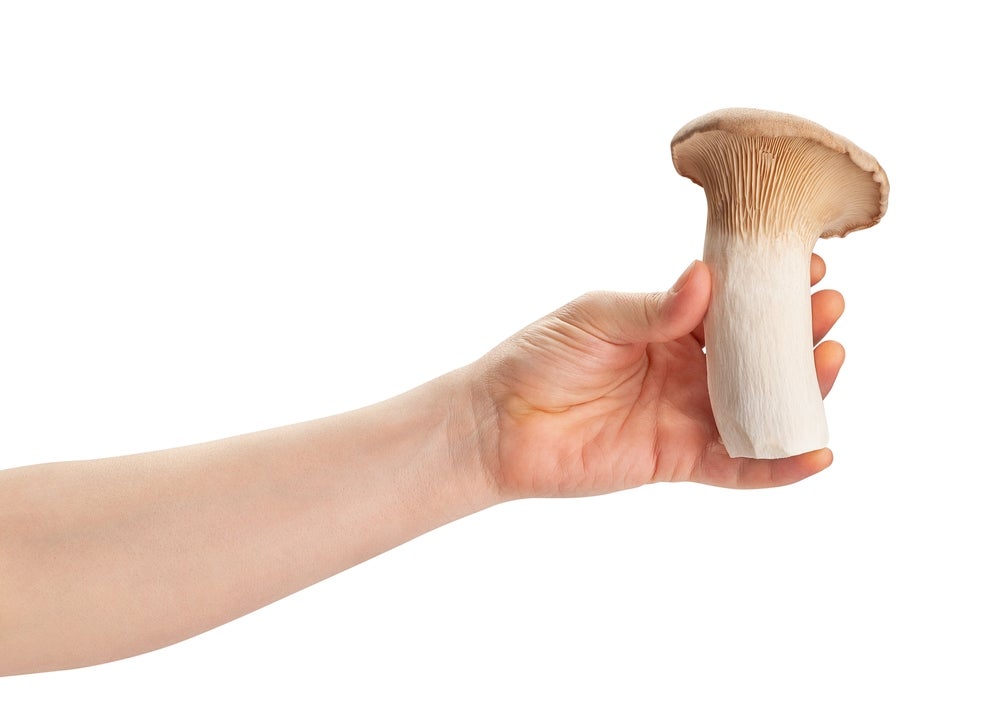Researchers from Cornell University and the University of Florence have developed a pair of biohybrid robots that incorporate mycelium into their hardware, allowing them to respond to various stimuli.
In the future, these robots could be used by the farming sector to support precision agriculture and help mitigate the sector’s GHG emissions. The use of mushrooms and their mycelia for environmental purposes has been a growing trend in recent years, with the consumer goods, retail and apparel, and construction sectors all investing and innovating.
Mycelium grown into the hardware helps biohybrid robots respond to the world
In August 2024, a team of scientists from Cornell University and the University of Florence released images of their latest development: two biohybrid mushroom-controlled robots. The robots’ hardware was developed first, one with starfish-style legs and one with wheels to roll around on.
Fungal mycelia were then grown into the electronics of the robot, in such a way that the hardware could pick up on the unique electrical signals released by the mycelium. Mycelia is the name for the root-like vegetative part of a fungus. It consists of a network of very fine filaments that can link many mushrooms together. The Cornell/Florence team used the mycelium of a King Oyster mushroom—a particularly delicious variety.
The biohybrid robot can walk (or roll) around in response to various stimuli. In the video shared by researchers, the mycelium incorporated into the starfish robot is exposed to UV light and responds by scuttling away. This prompted many news organisations (reputable or otherwise) to report that scientists have taught a mushroom to walk or have created a robot with a mushroom for a brain. While the truth is not quite as sensational as this, there are exciting potential uses for the technology—particularly when it comes to environmental protection.
These robots could reduce farming emissions by supporting precision agriculture
The research team hopes that these biohybrid robots could be put to work in the fields, potentially driving precision agriculture. Precision agriculture is a farm management concept in which water and agrochemicals are applied prescriptively to maximise output while minimising resource inputs. It often relies on technologies like artificial intelligence (AI), the Internet of Things (IoT), and robotics.
How well do you really know your competitors?
Access the most comprehensive Company Profiles on the market, powered by GlobalData. Save hours of research. Gain competitive edge.

Thank you!
Your download email will arrive shortly
Not ready to buy yet? Download a free sample
We are confident about the unique quality of our Company Profiles. However, we want you to make the most beneficial decision for your business, so we offer a free sample that you can download by submitting the below form
By GlobalDataAgribusinesses are increasingly turning to this high-tech style of farming to mitigate their environmental impact. The overuse of nitrogen-based fertilizers contributes significantly to greenhouse gas (GHG) emissions, as they are very energy-intensive to produce. Additionally, fertilizers release nitrous oxide when they interact with soil microbes. This nitrous oxide warms the planet 300 times more than the same amount of carbon dioxide. By ensuring fertilizers are only used prescriptively, precision agriculture helps to mitigate climate change.
The biohybrid mycelium robots could support precision agriculture because the mycelium component will respond to stimuli like soil moisture and levels of agrochemicals. Robotic hardware could be designed to detect the electrical signals released by the mycelium in response to these stimuli and feedback to farmers about which resource inputs are required. There is also potential for the development of biohybrid robots that are stimulated by the soil conditions and then apply the correct agricultural resources themselves.
Environmental uses for mushrooms and mycelia have grown a lot in recent years
This is not the first instance of environmentally minded inventors turning to mushrooms and their mycelial networks for help. Mycelium packaging is becoming a more mainstream option for companies wishing to go plastic-free with their deliveries. Companies like Evocative, GROWN bio, and Mushroom Packaging grow custom and standard packaging out of fungal mycelium, which can be composted after use.
There is also a growing market for mushroom-based fabric for clothing. Many of these mycelium fabrics resemble leather, providing material for high-quality clothes without the need for GHG-emitting cows. Environmentally friendly uses for mycelium are being developed for other sectors too, even if they are not commercially available yet.
The Hub for Biotechnology in the Built Environment (HBBE) developed a biohybrid arch structure, knitted out of fungal mycelium. This product, named BioKnit, could support regenerative construction in the future.
As more biohybrid technologies are released across more sectors, the rate of innovation will surely speed up and we will see commercialisation of these technologies on a much greater scale.








